First off, a disclaimer: Now that the school year is about to start at UW-Stout, my teaching, chairing and program directing duties will be (unfortunately) eclipsing much of any hope I have of keeping this blog frequently updated. My goal will be to have something posted every few weeks, to keep you informed of the snail pace progress that occurs during the school year!
Last month, I posted about the importance of trees (namely, the White Pine) in my game. The trees are essentially characters in my game, with a focus on their historic, environmental, and commercial value. I’d like to follow-up with a sister post, about some of the smaller foliage elements – the supporting actors – that are scattered around the river scenes of Tombeaux.
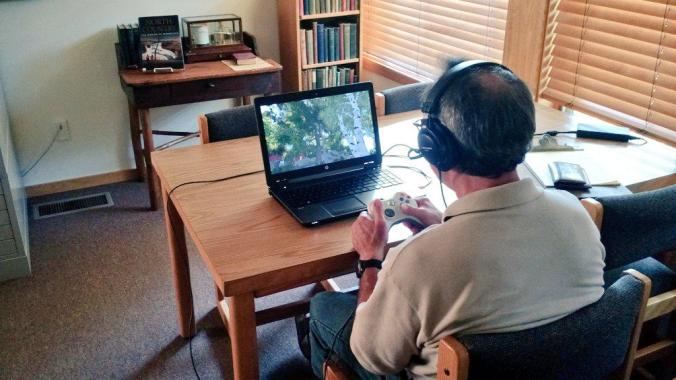
A scientist from the St. Croix Watershed Research Station, playtesting Tombeaux (photo courtesy Greg Seitz)
I once again returned to the source – the river – to get the evidence I would need. Through consultation with scientists at the Science Museum of Minnesota’s St. Croix Watershed Research Station and a trip out on to the St. Croix, I spent a mid-August day doing some field research that would help me refine my focus (I was also able to get some valuable playtesting time in to the trip).
There are a myriad of common plants one might find in a variety of natural settings (around the world), whether they be prairies, forests, or rivers. As examples, daisies, queen anne’s lace, cattails, ferns, knapweed, various grasses, and mushrooms are found (and easily recognized) by people around the country, and sometimes world. Plants like these are also native to the St. Croix region, and thus necessary elements to my game, providing the “filler” that I am looking for regarding ground cover around the river. Just as with the trees, I used a fantastic program called Speedtree to create all of my plants. In a few cases, I was able to employ and modify the template of a plant they had already created. But in most cases I found that it was necessary to strip down the structure of a plant to create a new, unique looking species that would fit my specific needs.
In addition to the common plants mentioned above, there were a few unique plants that I knew I would need to create and represent well in the game, due to either their history or their “prolific-ness” on the river. Regarding the latter, wild celery (Vallisneria americana) is in fact a frequently found piece of vegetation around the country and world, but also very unique to the St. Croix. It’s a type of “tape grass” found in freshwater environs and is commonly sought after by waterfowl; it has a beautiful movement as it flows with the underwater currents. When one is on the St. Croix, the plant seems to be everywhere – serving as both the bane of the fisherman’s motor and also dinner for a duck.
I wanted to be sure to represent this plant – even if in a subtle way – in Tombeaux. Making it in Speedtree was somewhat easy – I first created a simple grass cluster, and applied a subtle amount of force to the mesh, which resulted in a wavy feature that seemed to fit well with the natural flow of wild celery. When a slow, weak wind force was applied, it gave the look of a grass moving underwater.
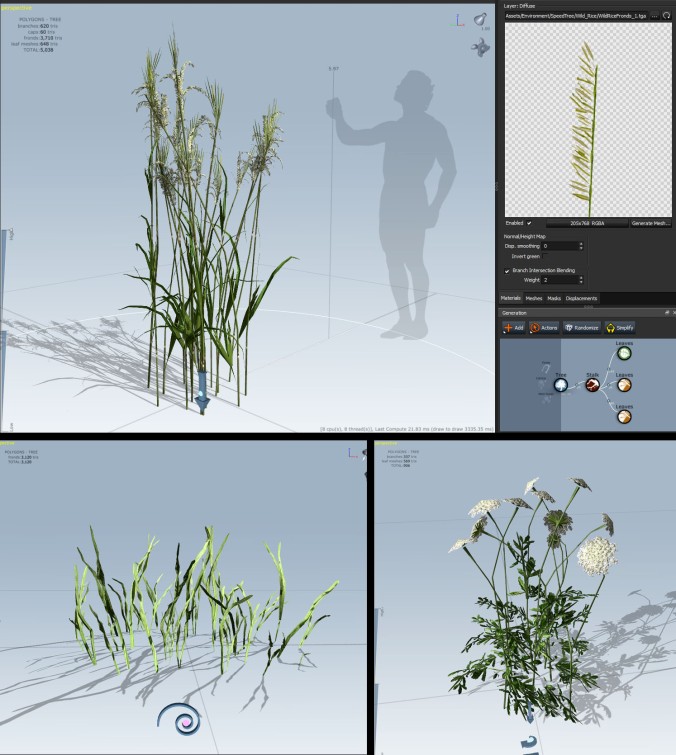
Using Speedtree – Wild Rice (Top), Wild Celery (Bottom Left), & Queen Anne’s Lace (Bottom Right)
The second unique plant was a bit trickier. Northern Wild Rice (Zizania palustris) is a well-known upper-Midwest staple, especially in its final form on the dinner table (it is not actually a form of rice, but a grass with grains growing from it). This plant is particularly important to Tombeaux, due to its historical significance in the Ojibwe culture (both in the past and still today). The harvesting and preparation of wild rice is an art in itself, implementing a series of tools and extremely involved processes, including the use of canoes, knockers (large wooden sticks that remove the grain without damaging the plant), and winnowing baskets that are made from birch bark.
When the St. Croix and surrounding tributaries were completely flooded due to logging (with both high water and the presence of logs), the wild rice began to dwindle. With a spiritual, cultural, and economic way of life for such a large population disappearing, it foretold of what was to come with land and rights also going by the wayside. My use of the plant in Tombeaux thus has both historical and environmental intentions, hoping that it catches the eye and interest of a player to learn more.

Drawing of Wild Rice Harvest by S. Eastman
Due to it growing so thick in a natural environment, I wanted to make the wall of wild rice exactly that – a thick collection that swayed in the wind, not allowing the player to navigate beyond its edge. In the game, I’ll have various tools and canoes nearby, to provide the story of this important part in Ojibwe culture to the player to observe and consider. Using photos from wild rice plants, I applied textures and wind properties to the plants in Speedtree, to give them as real a representation of the actual plant as possible.
I hope this brief glimpse into some of the “supporting actors” of Tombeaux’s environment has helped you gain a better understanding for both the process and the meaning behind their creation.

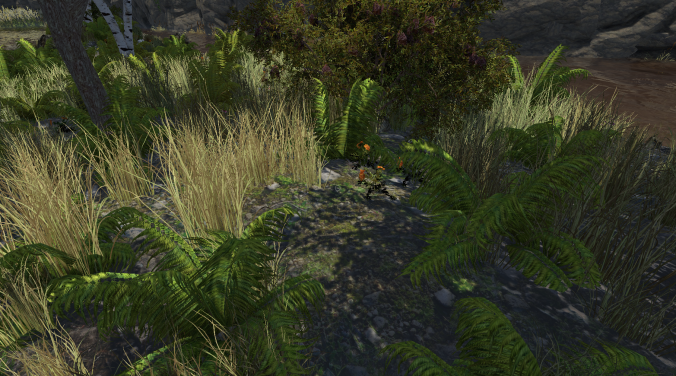

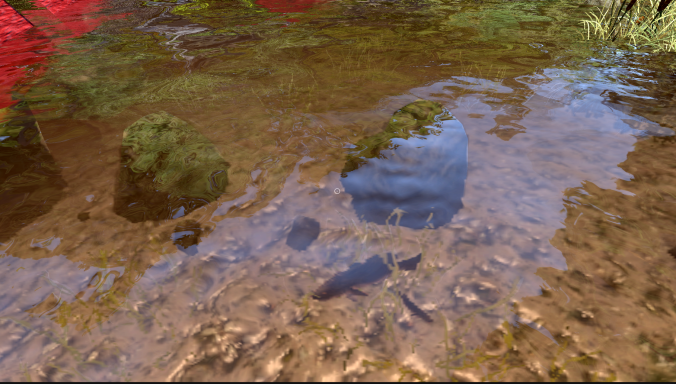


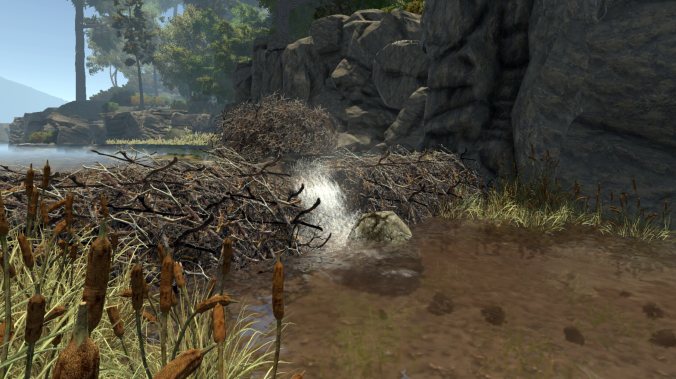
What an interesting project! Love the work you’ve done on the plants. I hope to explore it when it’s done. Will you consider selling the plants and trees you’ve made when you’re done? I think it would be a great benefit to many developers.
LikeLike
A beautiful project. I am so happy to see another individual who grasps the understanding of how a video game could be such a great educational tool. If kids can memorize the stats of hundreds of fictional pokemon characters, then with the right motivation they could learn important information of the flora and fauna of our natural world. Raising awareness in turn can foster caring for our beautiful diverse environment in which scientists are estimating 150-200 species go extinct every day. I want to create one of these games for prarie and woodland plants in eastern Iowa and another about flora and fauna of the Mississippi. How can I go about doing this?
LikeLike
For starters, we can chat about it! Let’s connect via email – I’ll reach out to you soon!
LikeLike